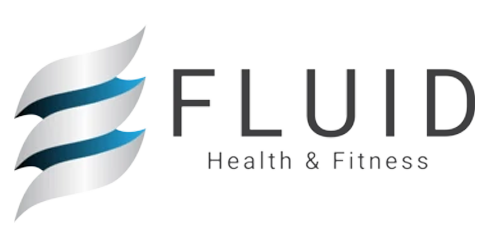The body often has a great ability to perform tasks over and over in daily life, and is relatively resilient. With that being said, at some point the body begins to break down if those tasks are repetitive in nature and beyond the capacity of the body to withstand the load that is placed on it. Overuse injuries are caused by performing the same movement or task repeatedly, thus wearing out the muscle, tendon or specific body structure like the bone or joint. There is often a finite point in which the body gets worn down and starts to tell us to stop or becomes injured.
Usually, the sooner you stop when the body tells you to stop, the easier and quicker the recovery. If one pushes through pain and dysfunction, then it often takes longer in order to return to a healthy state and again achieve a pain-free lifestyle. Once an overuse injury has occurred, it may take anywhere from a few weeks to many months to fully recover from this.
This article will discuss the most common overuse injuries, overuse injuries and considerations related to the athlete and non-athlete, steps for repair and rehabilitation of the injury, underlying issues related to overuse injuries, and proper prevention of overuse injuries from occurring.
Some of the most common overuse injuries are related to elbow pain, shoulder pain, knee pain and/or low back pain. Specifically, the diagnosis related to the aforementioned body parts may be termed: lateral epicondylitis or “tennis elbow,” rotator cuff tendinitis or “swimmer’s shoulder,” and patellar tendonitis or “runner’s knee,” respectively. Lateral epicondylitis is when the extensor tendons on the outside of elbow become painful and inflamed. Rotator cuff tendinitis is when the shoulder muscles that hold the shoulder in the socket and allow for overhead movements become injured or inflamed. Patellar tendonitis is when the tendon in the front of the knee becomes inflamed and painful with running, walking or stairs. The first line of defense for an overuse injury is physical therapy, and it is rare that surgical intervention is necessary.
Athletes often develop overuse injuries during their specific sport season or leading up to their season or competition. This can be caused by excessive training for the particular sport or skill, and not enough cross training. Essentially the person performs activity that is too intense with the stress they are subjecting the body to. This can be a combination of whether it be too much intensity, duration, or frequency. Some common overuse injuries that athletes experience specifically are “runner’s knee,” shin splints, or even stress fractures. A stress fracture is a small fracture or crack in one’s bone, and can be debilitating for an athlete and keep them out of their sport.
With recent trends in the increase of specialization in sports from a young age and the athletes more likely to focus on one sport repetitively, there has been a noted increase in more and more overuse injuries occurring. This is compared to the athlete who plays two or three sports in a given year, thus allowing the body to cross train and achieve different skills, movements, and different types of workouts. Proper training to avoid overuse injuries is imperative for the young athlete in particular, as well as proper rehabilitation as needed when an overuse injury has set in.
Overuse injuries are not only experienced by athletes. When overuse injuries occur at work or in daily life, a proper evaluation is necessary to determine if this person can and should return to the particular activity level that caused the overuse injury in the first place. Overuse injuries related to improper posture or poor ergonomic set-up at work should be evaluated and changed as soon as possible. For example, lateral epicondylitis can result from a person having a poor posture and a poor ergonomic fit while on their laptop, thus putting excessive strain on the the extensor muscles and tendons that insert onto the lateral elbow. This person may likely also have poor scapular strength and weakness in their core muscles, muscle imbalance and may have other regions of discomfort in their body.
When one experiences an overuse injury, there are certain steps to follow in order to repair, rehabilitate and return to the prior level of functioning. Often, one must stop the cycle of overuse in order to become healthy again. For example, if a person is repeatedly lifting overhead for work and develops an overuse injury to the shoulders, specifically the rotator cuff muscles, then that person must stop the continued repetitive overhead lifting in order to let those muscles rest and repair. For a runner, they may have to stop running for a period of time in order to heal their overuse injury and decrease the stress on that particular body part. Thus, step one is to stop doing what caused the injury.
If a body structure is in the acute phase of dysfunction and injury with inflammation present, that person may benefit from rest, control of the inflammation with ice, elevation, compression or other means. In that phase, one needs to decrease the tissue damage by stopping the repetitive movement that caused the damage, and decrease the inflammation and resultant chemical response. Next, there needs to be an evaluation to determine exactly what caused the pain and dysfunction associated with the overuse injury to begin with. There may be actual damage, or it may that the body is telling the person to stop the motion before actual damage occurs.
After the initial inflammation has decreased, a person may be able to return to that particular movement that caused the overuse injury with proper rehabilitation. In either case, whether it be an athlete or a desk-worker that developed the overuse injury, the person usually has dysfunctional aspects related to an underlying issue. Proper rehabilitation is very important to avoid this overuse injury from coming back in the future, as the largest predictor of an injury occurring is the presence of a previous injury.
Some examples of underlying issues are poor strength and stability, poor flexibility, inefficient or inadequate movement patterns, poor posture or a body imbalance. Overuse injuries can often be avoided by proper evaluation and advice by a physical therapist or healthcare professional. This person will be able to evaluate the individual and determine if any deficits in the body exist, and how to address and overcome this. This rehabilitation may consist of building stability or strength, gaining flexibility, improving their movement pattern or body positioning that they use while performing the particular task. Overuse injuries and pain are more likely to plague a person if the actual movement they are performing is with a poor movement pattern or inadequate body functioning.
It may also be important that the person determines ways in which they can lighten the load or perform the task with the use of an external force or prop in order to return safely back to full capacity. For example, if one experiences low back pain and dysfunction after lifting heavy boxes all day at work, that person may need to build core strength, gain flexibility and improve their squat and lifting technique in order to perform the task more effectively. Even still, if the loads are too heavy for your body’s capacity, this can still result in an overuse injury. That person may need to decrease the weight of load, use props that aide in the task or ask for help.
For the athlete, the professional can also give advice on a proper training schedule when this person is adequately prepared to return to sport or activity. This schedule is often most effective with a combination of sport-specific training, cross-training, stretching, strengthening, and rest. Rest days are important in order to give the body time to heal so it is not just breaking down, thus creating an injury. Education and patient education is thus a key aspect in rehabilitation of an overuse injury. For example, some forms of cross-training for a runner are the use of a stationary bike, elliptical trainer and flow yoga.
Proper prevention of an overuse injury is a key component. Generally, the more healthy, balanced, and fit a person is the less likely they may be to develop an overuse injury. Achieving proper nutrition and hydration is important to avoid injury and remain healthy. An adequate aerobic capacity, fitness level and getting enough variation of movement and activity is also imperative. Do not overtrain, and stick to a particular plan of care to avoid injury. Awareness of proper posture and movement patterns are also important in prevention. Lastly, one must adequately listen to their own body and address any pain or issues as soon as possible so as not to develop an overuse injury. If you think you may have an overuse injury, a prompt and full evaluation is warranted. If you are interested in a new goal or fitness program, first consult your doctor to determine your current health status, then seek the advice of a physical therapist or fitness professional to help you safely attain your goals.
To restore your body with one of our Physical Therapists, call 1-844-358-4343, email us at admin@fluidhealthandfitness.com, or send us a message


